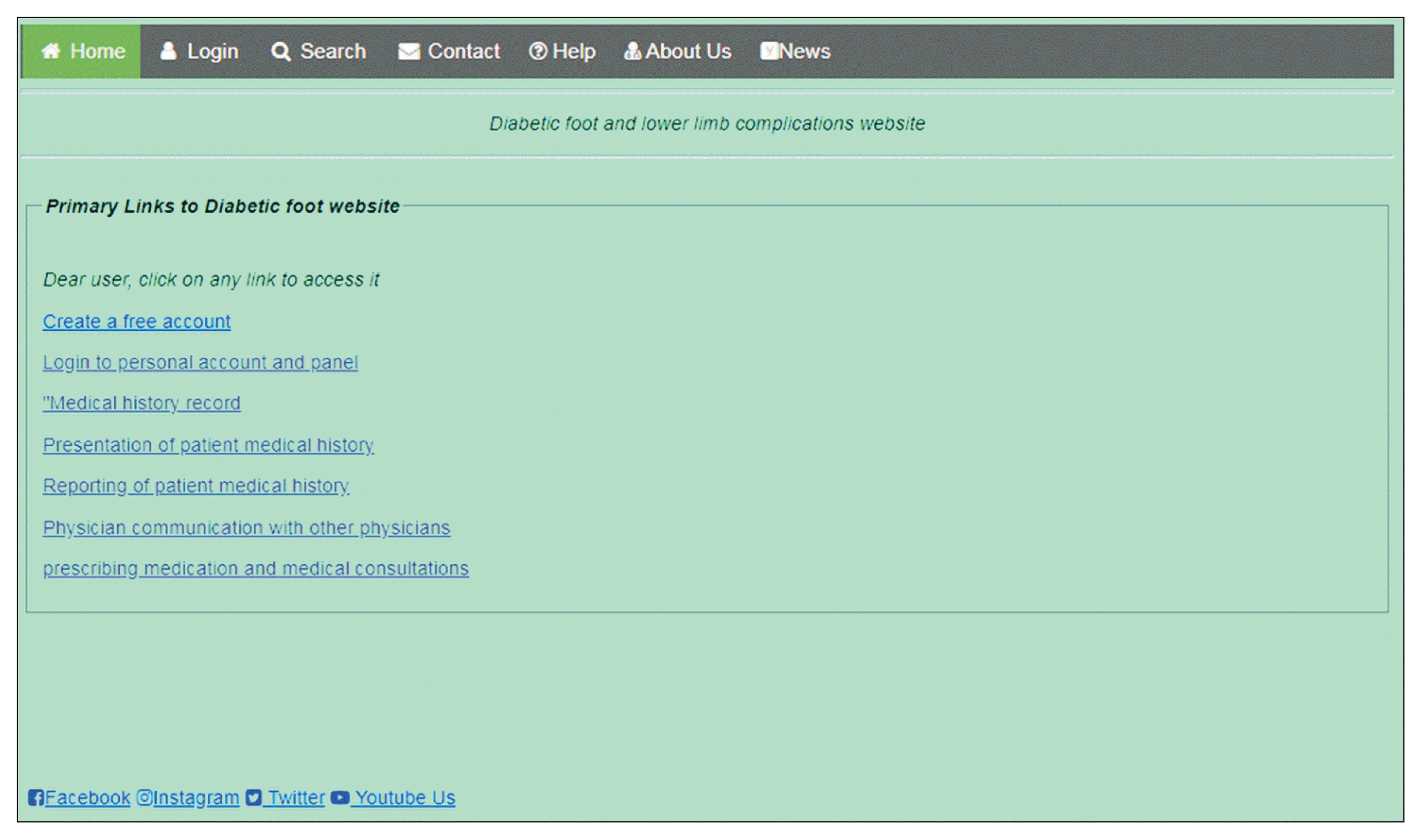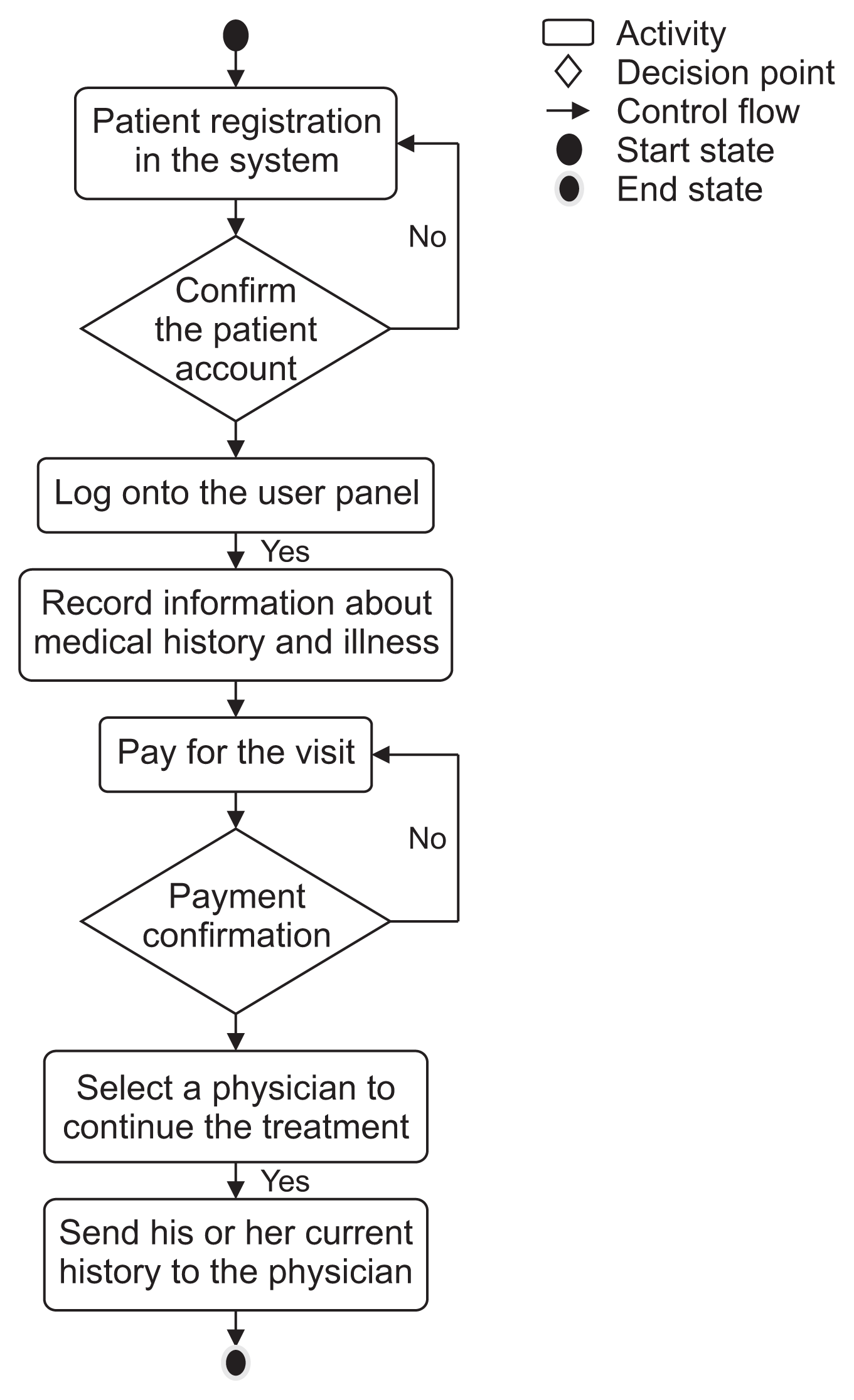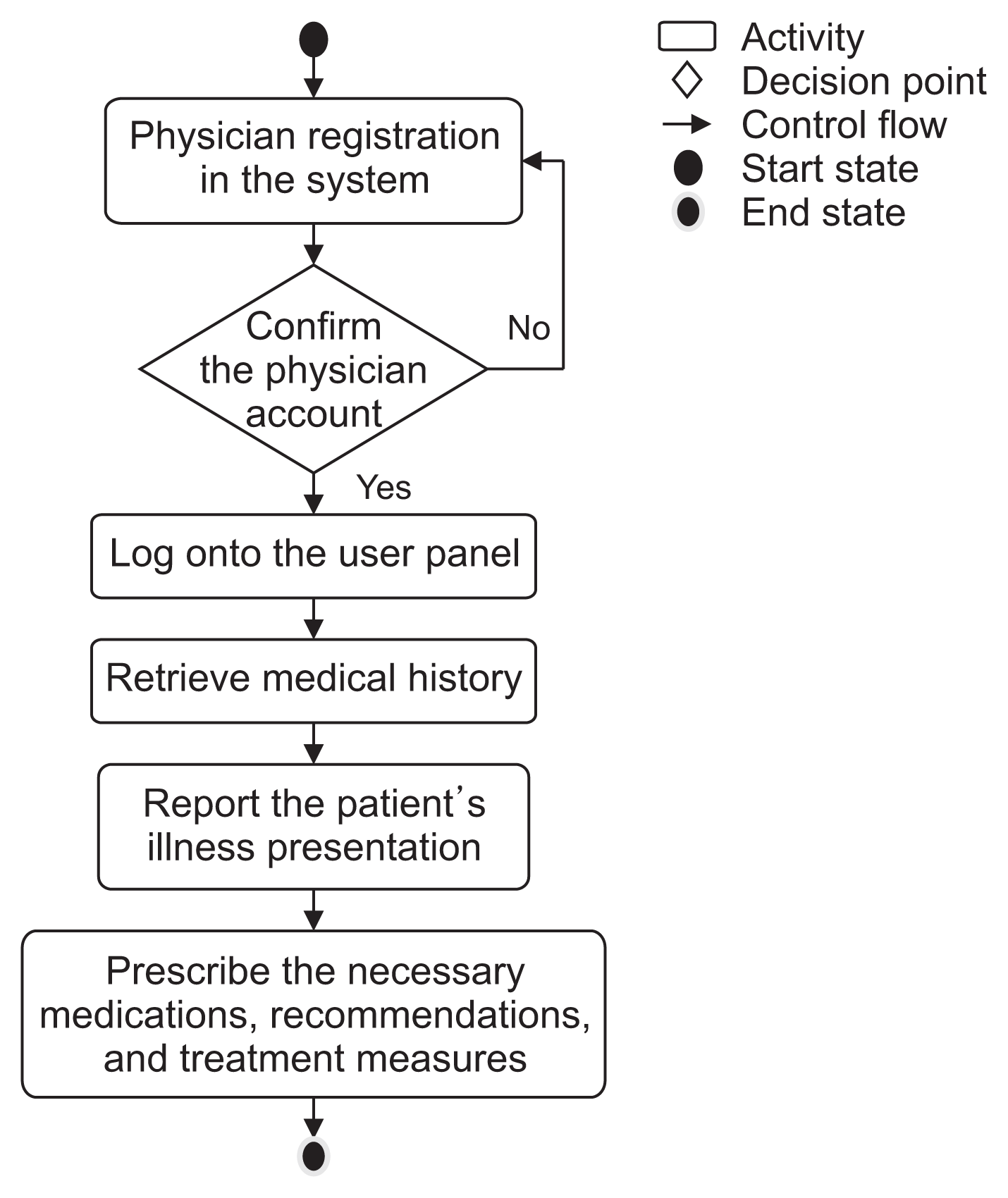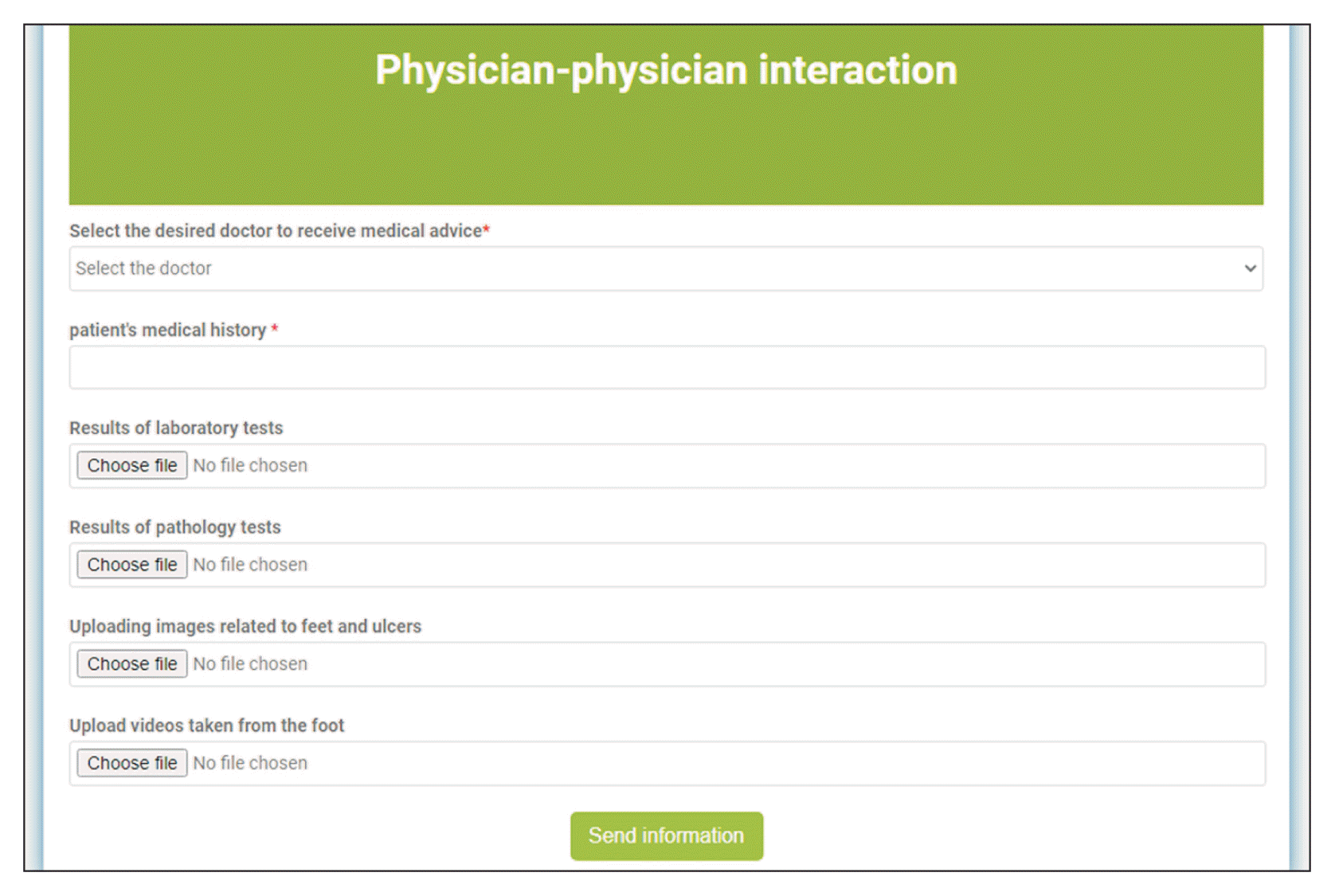1. Moulaei K, Malek M, Sheikhtaheri A. A smart wearable device for monitoring and self-management of diabetic foot: a proof of concept study. Int J Med Inform. 2021; 146:104343.

2. Moulaei K, Malek M, Sheikhtaheri A. Monitoring of external predisposing factors for diabetic foot: a literature review and physicians’ perspectives. Med J Islam Repub Iran. 2019; 33:159.

3. Andersen CA, Roukis TS. The diabetic foot. Surg Clin North Am. 2007; 87(5):1149–77.

4. Boulton AJ, Vileikyte L, Ragnarson-Tennvall G, Apelqvist J. The global burden of diabetic foot disease. Lancet. 2005; 366(9498):1719–24.

5. Kolltveit BC, Gjengedal E, Graue M, Iversen MM, Thorne S, Kirkevold M. Telemedicine in diabetes foot care delivery: health care professionals’ experience. BMC Health Serv Res. 2016; 16:134.

6. Chanussot-Deprez C, Contreras-Ruiz J. Telemedicine in wound care: a review. Adv Skin Wound Care. 2013; 26(2):78–82.
7. Boodoo C, Perry JA, Leung G, Cross KM, Isaranuwatchai W. Cost-effectiveness of telemonitoring screening for diabetic foot ulcer: a mathematical model. CMAJ Open. 2018; 6(4):E486–E494.

8. Wilkins EG, Lowery JC, Goldfarb S. Feasibility of virtual wound care: a pilot study. Adv Skin Wound Care. 2007; 20(5):275–8.
9. Batsis JA, DiMilia PR, Seo LM, Fortuna KL, Kennedy MA, Blunt HB, et al. Effectiveness of ambulatory telemedicine care in older adults: a systematic review. j Am Geriatr Soc. 2019; 67(8):1737–49.

10. Hicks CW, Canner JK, Karagozlu H, Mathioudakis N, Sherman RL, Black JH 3rd, et al. Quantifying the costs and profitability of care for diabetic foot ulcers treated in a multidisciplinary setting. J Vasc Surg. 2019; 70(1):233–40.

11. Aalaa M, Malazy OT, Sanjari M, Peimani M, Mohajeri-Tehrani M. Nurses’ role in diabetic foot prevention and care: a review. J Diabetes Metab Disord. 2012; 11(1):24.

12. Gottrup F. A specialized wound-healing center concept: importance of a multidisciplinary department structure and surgical treatment facilities in the treatment of chronic wounds. Am J Surg. 2004; 187(5A):38S–43S.

13. Bains SS, Egede LE. Associations between health literacy, diabetes knowledge, self-care behaviors, and glycemic control in a low income population with type 2 diabetes. Diabetes Technol Ther. 2011; 13(3):335–41.

14. Sinharay K, Paul UK, Bhattacharyya AK, Pal SK. Prevalence of diabetic foot ulcers in newly diagnosed diabetes mellitus patients. J Indian Med Assoc. 2012; 110(9):608–11.
15. Hsu CC, Sandford BA. The Delphi technique: making sense of consensus. Pract Assess Res Eval. 2007; 12(1):10.
16. Moulaei K, Bahaadinbeigy K, Fatehi F. A novel minimum data set (MDS) for the management of diabetic foot: basis for introducing effective indicators to the better management, control and monitoring of diabetic foot. Clinical Diabetology. 2021; 10(6):1–12.

17. Brubaker C, Jana S, Ray B, Khurshid S, Shmatikov V. Using Frankencerts for automated adversarial testing of certificate validation in SSL/TLS implementations. IEEE Secur Priv. 2014; 2014:114–29.

18. Perez AM, Zeng D, Tseng CJ, Chen H, Whedbee Z, Paton D, et al. A web-based system for near real-time surveillance and space-time cluster analysis of foot-and-mouth disease and other animal diseases. Prev Vet Med. 2009; 91(1):39–45.

19. Rasmussen BS, Jensen LK, Froekjaer J, Kidholm K, Kensing F, Yderstraede KB. A qualitative study of the key factors in implementing telemedical monitoring of diabetic foot ulcer patients. Int J Med Inform. 2015; 84(10):799–807.

20. Wilbright WA, Birke JA, Patout CA, Varnado M, Horswell R. The use of telemedicine in the management of diabetes-related foot ulceration: a pilot study. Adv Skin Wound Care. 2004; 17(5 Pt 1):232–8.

21. McGill M, Constantino M, Yue DK. Integrating telemedicine into a national diabetes footcare network. Pract Diabetes Int. 2000; 17(7):235–8.

22. Georgsson M, Staggers N. An evaluation of patients’ experienced usability of a diabetes mHealth system using a multi-method approach. J Biomed Inform. 2016; 59:115–29.

23. Lopez R, Chagpar A, White R, Hamill MH, Trudel M, Cafazzo J, et al. Usability of a diabetes telemanagement system. J Clin Eng. 2009; 34(3):147–51.

24. Luna DR, Rizzato Lede DA, Otero CM, Risk MR, Gonzalez Bernaldo de Quiros F. User-centered design improves the usability of drug-drug interaction alerts: experimental comparison of interfaces. J Biomed Inform. 2017; 66:204–13.

25. Middleton B, Bloomrosen M, Dente MA, Hashmat B, Koppel R, Overhage JM, et al. Enhancing patient safety and quality of care by improving the usability of electronic health record systems: recommendations from AMIA. J Am Med Inform Assoc. 2013; 20(e1):e2–8.

26. Ayani S, Sadoughi F, Jabari R, Moulaei K, Ashrafi-Rizi H. Evaluation criteria for health websites: critical review. Front Health Inform. 2020; 9(1):44.

27. Berdot S, Sabatier B, Gillaizeau F, Caruba T, Prognon P, Durieux P. Evaluation of drug administration errors in a teaching hospital. BMC Health Serv Res. 2012; 12:60.

28. Nielsen J. Usability engineering. San Francisco (CA): Morgan Kaufmann;1994.




 PDF
PDF Citation
Citation Print
Print







 XML Download
XML Download